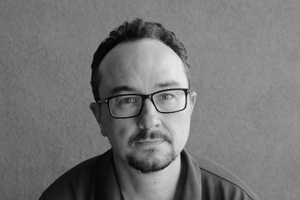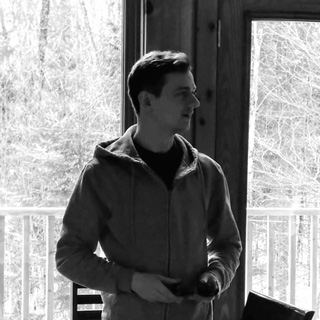Junghyun Joo astonished us posting snippets of his crowd work on his LinkedIn account. We were really surprised by the great variety of shots and quality of his works so we wanted to know more. Today he shares his story with us.

How did you become a crowd artist?
I originally entered the video industry as a 3D animator. My first company was a small animation studio, and of course I didn't have access to crowds back then. It was after moving to a second VFX company that I met Golaem. However, the first crowd tool I encountered was Miarmy, which I started using for R&D, not for production. The reason is that Miarmy was the trend at that time, and the senior artist I was working with was a Miarmy user. I studied on my own with tutorials and with the help of that senior artist for a while, but after I was able to handle some of the functions, I felt some discomfort. The biggest inconvenience was that I had to check the look of my crowds with a box-shaped character rather than with the actual model, and also the non-intuitive behavior settings. Then, I was curious about what a different tool would be like, and I came across with Golaem. When I first saw Golaem, my thoughts were that it was fairly intuitive and that the final look of my crowds could be checked fairly easily. For this reason, I decided to use Golaem as my main tool. This was my beginning as a Crowd Artist. Since then, I have switched companies twice and have used Miarmy, Golaem, and Massive, and now I am using Golaem as my main tool. It's something I'm comfortable with, and I like the fact that it is quite straightforward to send the crowds in Katana and Unreal.
Could you share a few projects you have worked on?
I only worked in Korea, so there are not many works that are known worldwide, just one Netflix drama: Sweet Home. My beginning as a fully-fledged Crowd Artist is the Korean movie Ansiseong, which was the war movie with the most crowd scenes in any Korean movie. And after that, I participated in the Chinese movie Shanghai Fortress, the Korean drama My Country, the Korean movie Seobok, and the Netflix drama Sweet Home, and I am working on 5 projects that are still unreleased. I can't say that I have participated in many works, but I was able to gain a lot of experience as a Crowd Artist. Starting with ordinary citizens, I worked on various creatures living in the land, sea, and air, such as soldiers, zombies, cockroaches, mices, crows, and fishes.
Given your experience in crowds, which trends have you seen emerge over time, and how do you see the future for crowds?
If crowds used to be a job so technically difficult and expansive that it was only used for one or two shots in a movie, now it is a universal technique that frequently appears in TV dramas. In addition, in the past, it mainly consisted in wide shots, but these days, we encounter more and more close-up shots.
I think that in the past, the director was focused on 'Is this possible?', beyond the limits of technology, but now it has expanded to 'Please express it this way'. Since crowds have to express large-scale scenes that cannot be filmed in real life, it is starting to become a solution to various scenarios. Therefore, I think the proportion and demand in crowds will continue to increase in the future.
As a result, I think the value of Crowd Artists will go up even more. After the revolution of the movie The Lord of the Rings, crowd tools also made a leap forward, and it seems that there will be many easier and more functional programs in the future. Could Golaem also become an axis of the future? Think about it.
How did the COVID crisis affect film production and the way you are going to work with crowds?
Due to the impact of the COVID, people are spending more time at home. Naturally, the watch time over TV or OTT has increased and as a result VFX companies have so many jobs that they are booming (although the film industry has fewer jobs). Our company is also working mainly on Netflix works.
OTT works that are coming out these days doesn't seem to be inferior to the quality of movies. People these days want something fresher and cooler. There are various elements of the drama that match their expectations, and I think that crowd scenes make it even more special. As I said earlier, crowds are already becoming a trend. It's like there isn't a project I'm working on that doesn't include a crowd scene.
Would you recommend CG artists to get in crowds? How? Which skills should they develop?
I would highly recommend getting in crowds to other CG artists. Most of the crowd work involves large-scale scenes. Because of that, every shot is really cool, and that makes me happy. However, in reality, it is rare to have a separate crowd team except for a large-scale studio. So, perhaps because of the closeness of work, there are many cases where animators also serve as crowd artists.
If you want to do crowds but don't have a seat, I recommend starting your career as an animator like me. It is important for crowd artists to master crowd tools, but it is even better if they have the animation skills to create the motions they need. It may be my personal opinion, but I think that to be a good crowd artist you have to learn animation. Because animation is the basis of crowds. Whether it's motion capture or animation, you need to develop the ability to see the right action for the situation.
Personally, I think crowds are made up of animations, placements, and entity quantities. In other words, it is the realm of the senses. Technological things can be covered with learning, but I think the ability to see the right look will naturally develop through animation. This results in richer and more realistic crowds.
Last but not least, being able to create simple tools with scripting also helps a lot.
Anything else you would like to share?
A good crowd scene emerges from disorder in order. To put it simply, I think it can be said about balance and variation. When you understand this, I think you'll be a real crowd artist making great shots.




